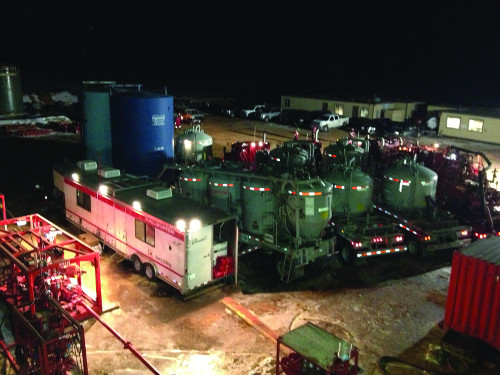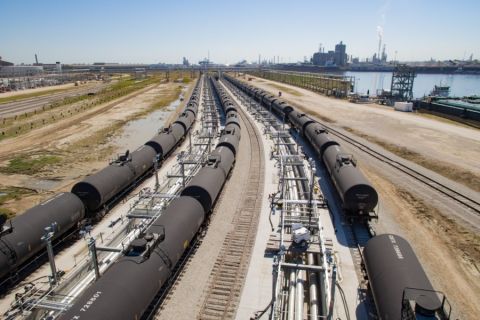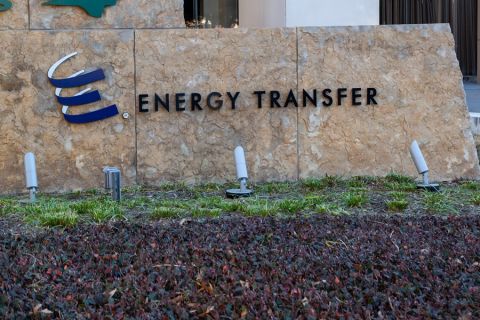Managed pressure drilling (MPD) techniques are being used to maintain a constant equivalent circulating density (ECD) when running and cementing casing. As with MPD, managed pressure cementing (MPC) is supplying value to this critical juncture of well construction. MPD is used more widely to mitigate drilling challenges and minimize reservoir damage, but the challenges don’t end when drilling has concluded, especially in areas with extremely narrow margins.
Failure to employ MPD while tripping and running casing results in the poor control of the surge/swab effects, leading to the initial pressure scenarios of using MPD in the first place.
MPD has been defined by the International Association of Drilling Contractors MPD/UBO committee as “an adaptive drilling process used to precisely control the annular pressure profile throughout the wellbore. The objectives are to ascertain the downhole pressure environment limits and to manage the annular hydraulic pressure profile accordingly.”
The goal of MPD is to avoid a continuous influx of formation fluids to the surface, with any influx incidental to the operation safely contained and managed using an appropriate process. In other words, MPD can be described as ECD management. MPC can similarly be described as managing the ECD during the entire cementing operation, including tripping out and running casing.
With wells being drilled with MPD, the difficulty has been to execute and achieve an effective zonal isolation with conventional cementing considering the narrow pressure window available. The objective of using MPC is to improve the zonal isolation process.

FIGURE 1. The cementing equipment is set up on the well site for MPC operations. (Source: Halliburton)
Case study
The wells considered for this case study are located in the Paradox Basin in the southeastern quadrant of Utah. The target in this area is an organic-rich dolomitic shale, and production is achieved by the intersection of natural fractures in the rock. The complexity of the geology, including folding and faulting of the formations, results in countless challenges while drilling this shale, and geosteering is fundamental to stay within the pay zone.
Additionally, variations in pressures within these fault compartments have become a major challenge. Typically, offset wells in the area had been drilled with a 3.8-lb/l (14.5-lb/gal) mud weight, which was swapped to a 4.6-lb/l (17.5-lb/gal) hematite system when landing the lateral.
MPD optimizes the drilling process by having control of the ECD, determining the actual pressure limits, reducing nonproductive time associated with lost circulation and kick events and, therefore, reducing drilling costs and providing a safer operation. The main objectives of implementing MPD on this project were to minimize fluid losses and avoid damaging the reservoir.
An MPD automated system was required for these wells due to the extremely narrow drilling window available, which was as low as 40 psi. The MPD strategy to drill the lateral section consisted of using a static underbalanced drilling fluid and maintaining a constant ECD above pore pressure, meaning that the mud weight was lower than what was used in conventional drilling.
The equipment required to apply MPD techniques in this tight environment included a 2,000-psi rotating control device, MPD autochoke and control system, rig pump diverter system, data acquisition system, drillstring floats and subs (nonreturn valves), and pressure-while-drilling. Figure 1 shows an MPC setup.
Several wells have been successfully and safely drilled and cemented using MPD and MPC techniques. The wells have been cemented without inducing losses or having formation influxes.
As a result, the drilling operation is not only optimized, but the gap in the well construction process is minimized by improving the zonal isolation and eliminating remedial cementing jobs afterward. Cement bond logs also have confirmed the success of MPC.

FIGURE 2. During the MPC process, real-time cement parameters are sent to the MPD system. (Source: Halliburton)
MPC
During cementing operations, similar to conventional drilling, the cement density is usually increased to avoid any formation influx. In this case, the effective ECD was higher than the fracture pressure, and therefore losses were induced, resulting in poor cement jobs and ineffective zonal isolation.
A lower mud density is used in MPC since the lighter mud weight used during drilling is still in the wellbore and will be displaced during the cementing operation of pumping the cement slurry and spacers. Applied surface backpressure (SBP) is adjusted accordingly to control and maintain the wellbore pressures within the operating limits (i.e., pore and fracture pressures). Zonal isolation is improved by eliminating or minimizing fluid losses and formation influxes during the cementing operation.
The real-time cement parameters are sent to the MPD system throughout the process (Figure 2), and Object Linking and Embedding for Process Control communication transmits data to the MPD data acquisition and control system. ECDs are then calculated and applied SBPs are determined to maintain the pressures along the wellbore within the operational window, adjusting the operational parameters accordingly.
The MPD control system also can send back readings from the mass flowmeter to the cementing operator that include flow rates and densities out, giving the operator the ability to monitor in real time while having a more precise measurement of the returns at surface.
The integration of both cementing and the MPD automated data acquisition control systems, along with the use of multiple fluids with different densities and rheological properties, were the main hurdles encountered when implementing MPC. The MPD automated control system had previously been modified to facilitate the data integration and the use of different fluids. The system also has the capability to calculate the ECD at any point in the wellbore when circulating the cement slurry and spacers.
Planning, engineering and communications are critical to successful MPD and MPC operations. MPC also is a technique that requires upfront planning prior to the well being spudded since it could impact how the surface equipment is plumbed into the rig. The client must support the collaboration between the cementing and the MPD companies from the start of the project so that procedures, workflows, data-transmission protocols, communication and contingencies can be developed.
Recommended Reading
Canadian Railway Companies Brace for Strike
2024-04-25 - A service disruption caused by a strike in May could delay freight deliveries of petrochemicals.
Enterprise’s SPOT Deepwater Port Struggles for Customers
2024-04-25 - Years of regulatory delays, a loss of commercial backers and slowing U.S. shale production has Enterprise Products Partners’ Sea Port Oil Terminal and rival projects without secured customers, energy industry executives say.
Report: Crescent Midstream Exploring $1.3B Sale
2024-04-23 - Sources say another company is considering $1.3B acquisition for Crescent Midstream’s facilities and pipelines focused on Louisiana and the Gulf of Mexico.
For Sale? Trans Mountain Pipeline Tentatively on the Market
2024-04-22 - Politics and tariffs may delay ownership transfer of the Trans Mountain Pipeline, which the Canadian government spent CA$34 billion to build.
Energy Transfer Announces Cash Distribution on Series I Units
2024-04-22 - Energy Transfer’s distribution will be payable May 15 to Series I unitholders of record by May 1.




